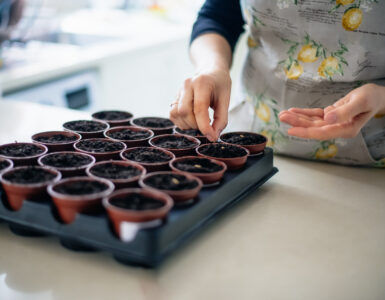When designing a landscape, you can think of it as also creating a musical number. Jerry Goodspeed, Director of the Ogden Botanical Gardens says you will need a beat, which is created first, then a melody that goes around the beat, and finally a harmony that fills in around the beat and melody and ties everything together.
Let’s start with the Beat:
1. Beat of a Landscape: In most landscapes the beat is the hardscapes, trees, or other very bold statements. They are repeated throughout the landscape and give rhythm and unity to the area. This is the first thing you can plant and design around. This can also hold true in annual and perennial beds. Start with the flowers you want to repeat throughout the bed. For example a tall blue salvia and some silver artemisia planted in a perennial bed in groups of two or three.
2. Melody to help it flow: These plants surround the beat and help carry a theme throughout the landscape or throughout a flower bed. For example, some pink eraniums, red salvia, and pink diascia that wind through the salvia and artemisia, connecting the beat from one group to the next.
3. Harmony to tie it all together: Pick a handful of flowers that you want to dance throughout the flowerbed. Then throw them, and I do mean literally throw them through the bed to add interest and create a beautiful garden. Plant them where they land. Use both tall, medium, and low plants as harmony, and do not be afraid to plant smaller flowers in the back and larger ones in the front. This adds depth and a little mystery to the garden. For example, in our garden we might throw out some low growing purple verbena and white alyssum, some yellow bidens and orange tithonia, and some white petunias, orange lantana, and purple lobelia throughout the garden. These colors and plants will help tie the garden together, accent the beat and melody, and just look good.
The Ogden Botanical Garden water-wise perennial garden features the following plants:
Beat: Michaelmas daisies, Echinacea, Russian Sage, and hardy fuschia
Melody: Agastache, Diascia, Lavender, Ornamental grasses, Penstemon, Artemisia, and Goldenrod.
Harmony: Columbine, Butterfly weed, winecups, ice plant, gaura, blue flax, bi-color sage, sedum, and homestead verbena
Ogden Botanical Gardens
1750 Monroe Blvd.
Ogden, Utah
801-399-8080
801-399-8200 (Extension office)
extension.usu.edu/weber/htm/horticulture














Add comment